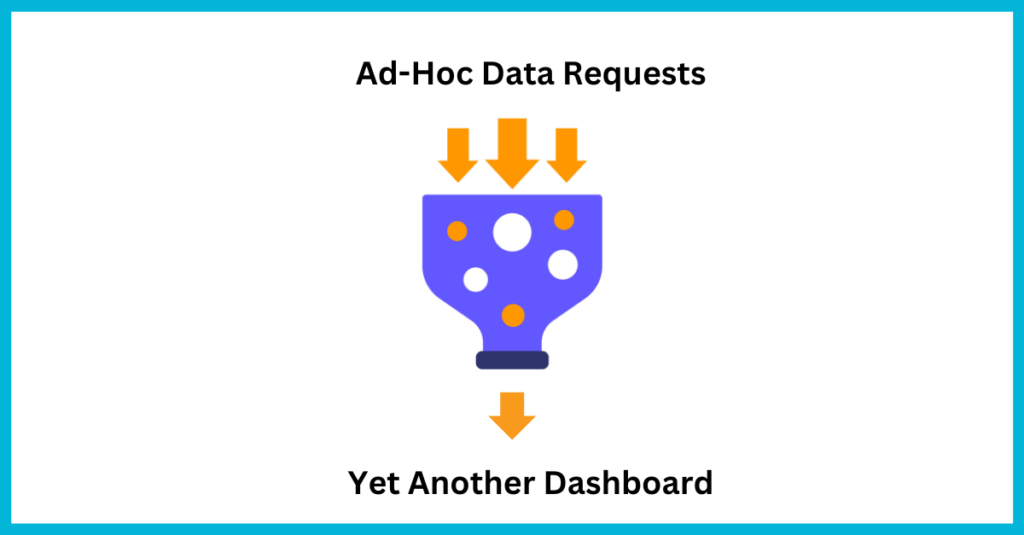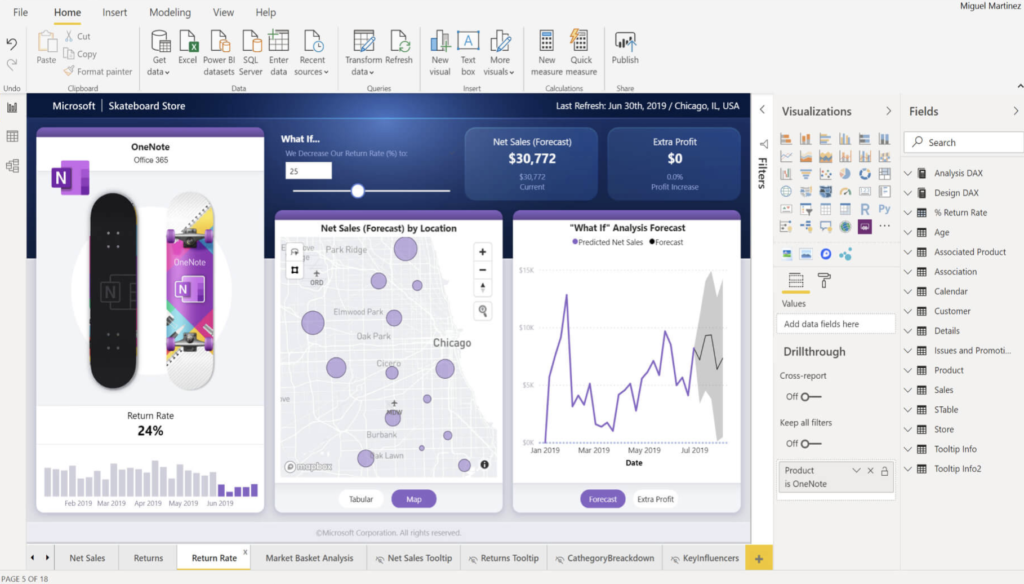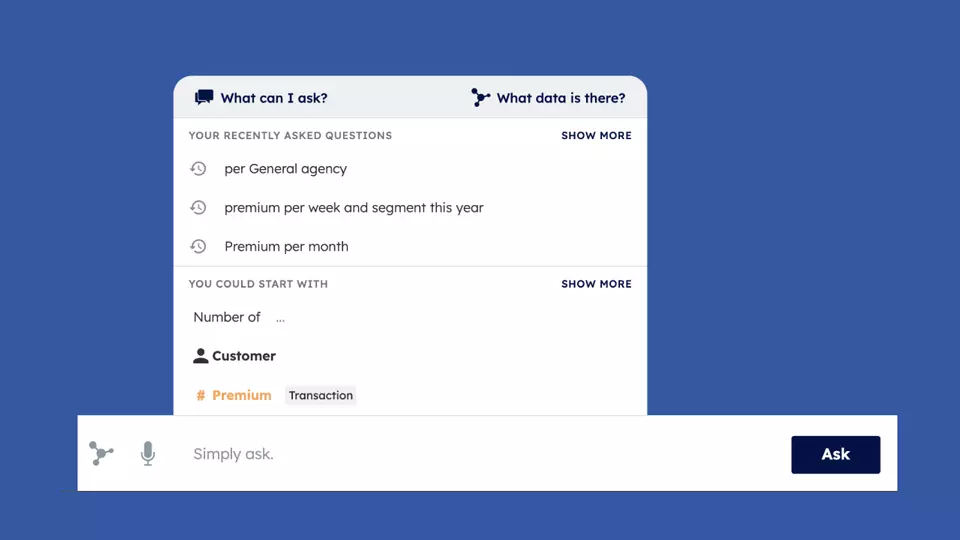The Need For PowerBI Alternatives: Why A Self-Service Analytics Solution Could Be A Game-Changer For You
PowerBI has long been a prominent player in the field of data analytics, offering robust data visualization and analytics capabilities, but today there is a growing market for PowerBI competitors and complementary tools. Let's take a look at why.

The Case for PowerBI Alternatives and Complementary Tools
In today’s data-driven world, the ability to effectively analyze and interpret data is vital for optimizing business operations. PowerBI has long been a prominent player in this field, offering robust data visualization and analytics capabilities, but today there is a growing market for PowerBI competitors and complementary tools.
First, let’s look at why PowerBI rose so quickly to where it is today. Simply put, PowerBI is part of the MS Office Suite – this means that it fits easily into existing tech stacks powered by Microsoft products like Excel, Azure etc. It also has a comprehensive set of features that really help data analysts in their day-to-day jobs.
Last, but not least, PowerBI is relatively affordable, compared to other solutions out there which makes it a go-to choice for many small and medium-sized businesses. These were two key factors that led to PowerBI’s growth.
However, this is not enough for today’s business environment, where universal access to information is critical – not just for data teams who can use PowerBI with ease, but for all users. Many organizations are finding their workflows disrupted due to an over-reliance on data teams as business users are not very comfortable with all aspects of PowerBI or similar solutions.

The PowerBI Interface. Picture credit: https://powerbi.microsoft.com
How PowerBI Alternatives Can Empower Business Teams
PowerBI was essentially made for the Data Analyst – a tool that they could use to crunch numbers and create dashboards for Business or non-tech users- something they could use to track their KPIs.
This model no longer works because of one simple reason:
It is not scalable enough for true data democratization.
As the need for data grows deeper and wider, business users request more and more customized dashboards to get the information they are looking for to make decisions. While they end up overwhelmed with dashboards, the data team gets inundated with ad hoc requests from various departments, spending a significant amount of their time on reactive tasks rather than focusing on strategic initiatives that drive innovation and progress. Furthermore, this also creates a bottleneck between the business user and the data team.
So the question is, how do we shift the ability to analyze data from a small group of experts to a broader base of employees?
A growing number of data teams are exploring PowerBI alternatives. They are seeking tools that can democratize data access and relieve them from that mechanical task. They are empowering non-technical users to analyze and derive insights from data by themselves.
It doesn’t have to be a case of either/or, a complementary approach would work just as well – in fact, this is what we believe in at Veezoo:
A complementary solution that excels in Self-Service Analytics and drives data democratization. Take a look below!
Self-Service Analytics democratizes data by making it accessible to everyone, irrespective of their technical expertise. In a culture of data democratization, everyone within an organization, from managers and sales representatives to HR and marketing teams, can leverage data to back their decisions.
A culture of data democratization is more than just a shared understanding of business metrics and KPIs across the organization. It is the culture of using data in every decision, to understand what is going with the business in detail: looking at which customers are not coming back and investigating why, analyzing the sales patterns for a particular product and much more. It is the difference between driving a car by just looking at the dashboard, with measurements on speed, rpm, direction, coordinates, and driving the car by also looking through the windows: seeing the individual obstacles ahead and the shape of the curves. You will drive much better. You will not only reach your destination faster, but also in one piece.
Equipped with the full picture, non-tech users don’t need to submit a data request or a dashboard to answer every pressing question – they can extract the insights all on their own, and data teams can continue to use more tech-heavy tools for more advanced, scalable tasks.
Moreover, organizations that cultivate a data democratization culture tend to be more innovative, as they harness the collective intelligence and unique perspectives of a diverse group of employees. By empowering all employees to use data, businesses are likely to uncover new insights, identify unseen opportunities, and make more informed strategic decisions, gaining a competitive advantage in the long run.
The fact that true Self-Service Analytics reduces the bottleneck caused by the traditional model of business intelligence enables business users to become self-reliant, making quicker and more informed decisions.
The Role of PowerBI in Today’s Data Landscape
PowerBI has made a mark in the business intelligence market, providing analytics capabilities that have been important for data teams worldwide. Its comprehensive data modeling tools, seamless connectivity with diverse data sources, and powerful data visualization capabilities make it an invaluable asset for data professionals.
For data teams, PowerBI is a comprehensive platform where they can transform raw data into sophisticated reports and dashboards. Its extensive feature set means a high degree of customization and in-depth data analysis- provided users have a firm grasp of data structures and coding.
But, PowerBI’s strength can also be its weakness for non-technical business users. Its expansive capabilities often mean a steep learning curve. This can lead to a degree of complexity and inaccessibility for those without a technical background. Business users seeking to quickly derive insights for decision-making might find themselves lost in the intricacies of PowerBI’s user interface and the technical expertise it demands.
In fact, efforts to democratize data access via Power BI can lead to data governance issues. When multiple users define their own metrics and calculations, it can cause inconsistencies and misinterpretations, impacting strategic decisions. Without a centralized management system, duplication of work can occur, with teams unknowingly creating similar dashboards, resulting in inefficiencies.
To avoid this, it makes sense to use a complementary tool to Power BI when it comes to data democratization and Self-Service Analytics. Veezoo is one of the most user-friendly PowerBI competitors for business teams looking to have more easy access to data, as it eliminates the need to understand complex data structures or learn how to navigate intricate software. Instead, you converse with your data as you would with a colleague, asking questions and receiving answers.

Veezoo helps business users frame their questions
Why Veezoo is the PowerBI Alternative For Your Business Team
Veezoo’s advantages extend beyond its interface. Let’s take a quick look at them.
Ease of Use: Veezoo simplifies data interaction, making data analysis as easy as asking questions and having a conversation. No need for any technical skills, much less SQL expertise, just simply, ask your data questions and receive answers instantly.
Fast Insights: Speed matters in the business world. Veezoo delivers insightful results in just seconds, skipping the usual wait for detailed analyst reports. It’s akin to having an on-demand analytics assistant.
Unmatched Flexibility: Veezoo breaks the mold of predefined queries. It allows users to ask any question from their data, transforming data analysis into an exploratory journey. Instead of you trying to decipher the data, Veezoo makes the data work for you.
Proactive Guidance: Veezoo doesn’t just respond; it guides. By suggesting follow-up questions, Veezoo helps users go deep into their data, pushing the boundaries of traditional data analysis.
What does this mean in practice?
Suppose a customer success manager needs to estimate the importance of a recurring bug in their software for the product team to take them seriously.
Instead of going through multiple messages and conversations which is a time-consuming task, they can simply ask how many issues came in with the particular bug ID and get the answer in seconds for the product team.
Now imagine doing this directly during a meeting – instead of a data request, subsequently followed by a second (or multiple) meeting, they would have the answer in the first meeting itself and decide on the next steps, making it a much more productive meeting.
In the long term, this puts your customer success team in a position to create a much better experience for their customers.
Wrapping Up: Why A PowerBI Alternative Could Be a Game-Changer For You
While PowerBI continues to be a strong player in the business intelligence market, it is not the best choice for true data democratization.
As businesses continue to evolve in an ever-changing, data-driven world, the ability to make quick, informed decisions is invaluable. By making data democratization a priority through Self-Service Analytics, you’re enabling more members of your organization to interact with and understand your data. This does not simply mean an improvement in efficiency, but an overall shift in your culture – fostering curiosity and data-driven decisions.
Exploring PowerBI competitors as well as complementary tools and adapting to a solution like Veezoo is a strategic decision that may propel your business to new heights in today’s era of ChatGPT.


